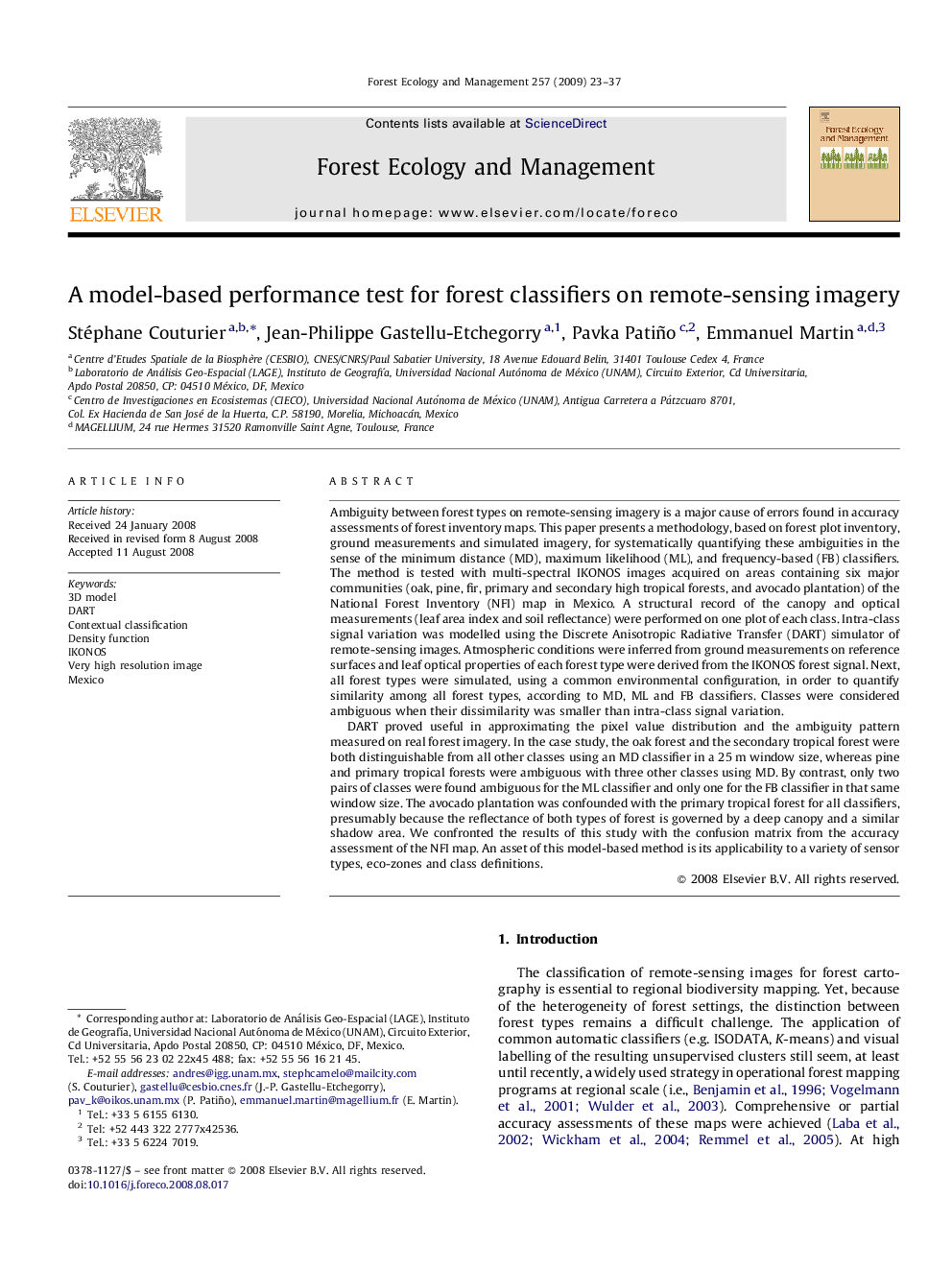| کد مقاله | کد نشریه | سال انتشار | مقاله انگلیسی | نسخه تمام متن |
|---|---|---|---|---|
| 89131 | 159333 | 2009 | 15 صفحه PDF | دانلود رایگان |

Ambiguity between forest types on remote-sensing imagery is a major cause of errors found in accuracy assessments of forest inventory maps. This paper presents a methodology, based on forest plot inventory, ground measurements and simulated imagery, for systematically quantifying these ambiguities in the sense of the minimum distance (MD), maximum likelihood (ML), and frequency-based (FB) classifiers. The method is tested with multi-spectral IKONOS images acquired on areas containing six major communities (oak, pine, fir, primary and secondary high tropical forests, and avocado plantation) of the National Forest Inventory (NFI) map in Mexico. A structural record of the canopy and optical measurements (leaf area index and soil reflectance) were performed on one plot of each class. Intra-class signal variation was modelled using the Discrete Anisotropic Radiative Transfer (DART) simulator of remote-sensing images. Atmospheric conditions were inferred from ground measurements on reference surfaces and leaf optical properties of each forest type were derived from the IKONOS forest signal. Next, all forest types were simulated, using a common environmental configuration, in order to quantify similarity among all forest types, according to MD, ML and FB classifiers. Classes were considered ambiguous when their dissimilarity was smaller than intra-class signal variation.DART proved useful in approximating the pixel value distribution and the ambiguity pattern measured on real forest imagery. In the case study, the oak forest and the secondary tropical forest were both distinguishable from all other classes using an MD classifier in a 25 m window size, whereas pine and primary tropical forests were ambiguous with three other classes using MD. By contrast, only two pairs of classes were found ambiguous for the ML classifier and only one for the FB classifier in that same window size. The avocado plantation was confounded with the primary tropical forest for all classifiers, presumably because the reflectance of both types of forest is governed by a deep canopy and a similar shadow area. We confronted the results of this study with the confusion matrix from the accuracy assessment of the NFI map. An asset of this model-based method is its applicability to a variety of sensor types, eco-zones and class definitions.
Journal: Forest Ecology and Management - Volume 257, Issue 1, 20 January 2009, Pages 23–37